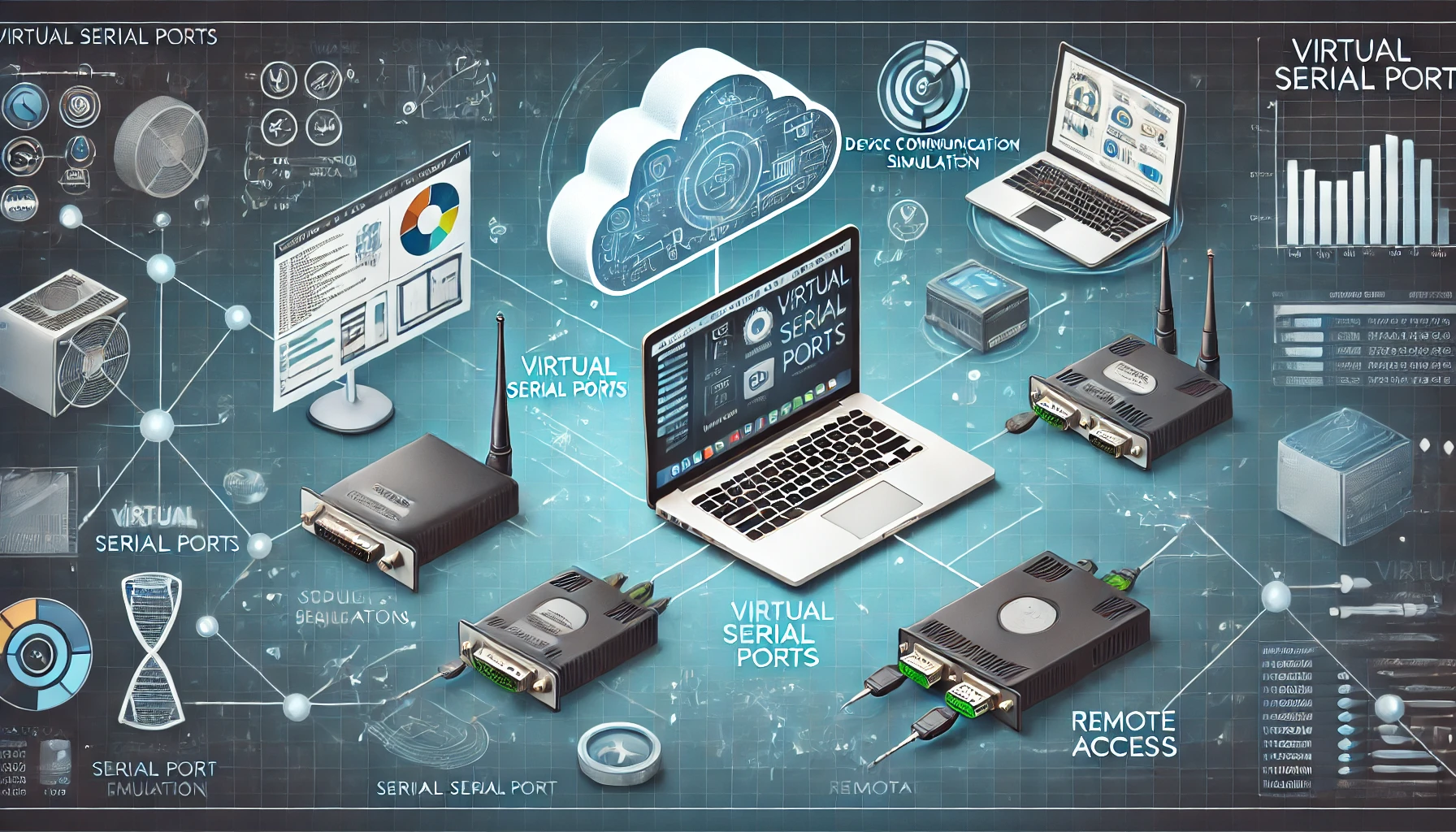
A virtual COM port is a software-simulated port of a real-life port (COM port) in computers. It establishes a communication channel using software as opposed to hardware cables. It enables computers to communicate with serial devices, e.g., sensors, meters, or controllers via a network. Using the tools that can be trusted in Aggsoft, businesses can set up and manage a virtual COM port without much trouble, and therefore, the interaction among devices is adaptable and quick without being bound by physical restrictions.
Why should Remote Equipment Management be important?
In the modern interconnected environment, it is normal to have a variety of firms that use remote devices to monitor, track, or control businesses. Remote access can be used in both industrial machines and medical devices to troubleshoot issues and remotely adjust the configuration. Old serial connections, however, are not capable of this as they require physical ports as well as cables. Virtual COM ports eliminate the said barrier, where remote communication is facilitated over the internet or LAN.
How do virtual COM ports allow the remote connection?
Virtual COM ports redirect the serial communication through a TCP/IP network. This implies that information that is transferred via a serial port of a device can be sent through a network and be received on another computer as though it were a local computer connection.
As an example, when there are multiple machines in various locations in a factory, a virtual COM port configuration would enable engineers to monitor and control those machines using a single central computer. It is similar to a direct serial connection except that it is not limited by distance.
What are the primary advantages of Business?
Virtual COM ports may help to simplify the operations and make it cheaper. Here are the key advantages:
Requires no additional hardware: There is no requirement of serial-to-Ethernet adapters and long cable runs.
Remote control of equipment: Technicians are able to maintain, upgrade or even troubleshoot equipment remotely.
Centralized management: It is possible to have several serial devices connected to one monitoring system.
Scalability: The new virtual ports can be added without reconfiguring hardware.
Reliability: The transfer of data is also stable and precise, even when the distance between networks is long.
The above advantages ensure that virtual COM ports are important in manufacturing, healthcare, logistics, and energy monitoring industries.
What does it do to make Troubleshooting and Maintenance easier?
In the case of virtual COM ports, maintenance staff are able to troubleshoot the problem remotely. They do not need to move the personnel to remote locations when they can log in using network software, monitor equipment status, and even reset systems. This saves time of downtime and facilitates the resolution of problems.
Also, it is possible to capture logs and data by accessing the virtual port and assisting the teams with the analysis of performance and identification of trends to prevent the occurrence of issues.
Are Virtual COM Ports compatible with Existing Systems?
Yes. This is one of their biggest strengths: compatibility. Dominating majority of the applications installed in traditional serial ports can run directly on the virtual COM ports without modification. The software just thinks that it is communicating over a normal COM port, although the data is sent over the network. This makes it easy and cheap to change hardware to software-enabled communication.
How Will Aggsoft Assist You in the Optimization of Remote Device Communication?
Aggsoft can use its communication software, which is easy to use and can provide a company with an opportunity to connect serial devices over TCP/IP networks with minimal setup. The solution will do away with the hardware limitations and will enable the management of remote devices with ease. Be it in the control of production systems, sensors, or the management of distributed equipment, the software provided by Aggsoft guarantees stable, safe, and uninterrupted communication of data. It is a perfect solution for any company that considers efficiency, flexibility, and reliability in network functions.
Overall, remote equipment management is made easy, cost-effective, and scalable with the help of virtual COM ports. They make the connection between the old and the new in terms of network-based control systems- they enable businesses to work smarter and not harder.
